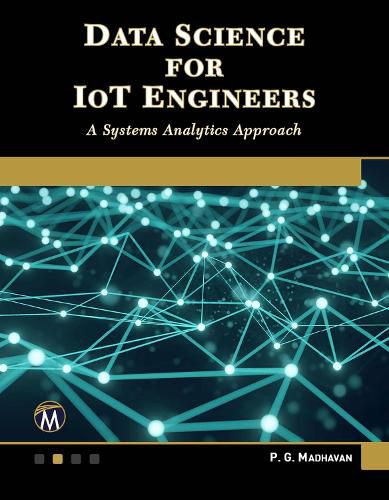Readings Newsletter
Become a Readings Member to make your shopping experience even easier.
Sign in or sign up for free!
You’re not far away from qualifying for FREE standard shipping within Australia
You’ve qualified for FREE standard shipping within Australia
The cart is loading…






This book is designed to introduce the concepts of data science to professionals in engineering, physics, mathematics, and allied fields. It is a workbook with MATLAB code that creates a common framework and points out various interconnections related to industry. This will allow the reader to connect previous subject knowledge to data science, machine learning, or analytics and apply it to IoT applications. Part One brings together subjects in machine learning, systems theory, linear algebra, digital signal processing, and probability theory. Part Two (Systems Analytics) develops a universal nonlinear, time-varying dynamical machine learning solution that can faithfully model all the essential complexities of real-life business problems and shows how to apply it.
FEATURES:
Introduces the concepts of data science to professionals in engineering, physics, mathematics, and allied fields Develops a universal, nonlinear, dynamical machine learning solution to model and apply the complexities of modern applications in IoT Covers topics such as machine learning, systems theory, linear algebra, digital signal processing, probability theory, state-space formulation, Bayesian estimation, Kalman filter, causality, and digital twins.
$9.00 standard shipping within Australia
FREE standard shipping within Australia for orders over $100.00
Express & International shipping calculated at checkout
This book is designed to introduce the concepts of data science to professionals in engineering, physics, mathematics, and allied fields. It is a workbook with MATLAB code that creates a common framework and points out various interconnections related to industry. This will allow the reader to connect previous subject knowledge to data science, machine learning, or analytics and apply it to IoT applications. Part One brings together subjects in machine learning, systems theory, linear algebra, digital signal processing, and probability theory. Part Two (Systems Analytics) develops a universal nonlinear, time-varying dynamical machine learning solution that can faithfully model all the essential complexities of real-life business problems and shows how to apply it.
FEATURES:
Introduces the concepts of data science to professionals in engineering, physics, mathematics, and allied fields Develops a universal, nonlinear, dynamical machine learning solution to model and apply the complexities of modern applications in IoT Covers topics such as machine learning, systems theory, linear algebra, digital signal processing, probability theory, state-space formulation, Bayesian estimation, Kalman filter, causality, and digital twins.